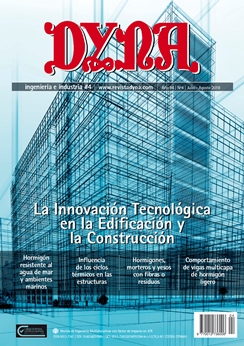INCORPORATION OF THE POLYURETHANE PELLET WASTE FOR THE IMPROVEMENT OF THE THERMAL INSULATION OF NON-STRUCTURAL CONCRETE BLOCKS
Keywords:
Bloque de picón, Conductividad, Canarian concrete block, Thermal conductivity, Polyurethane pellet, Plastic wasteAbstract
The lapilli is an aggregate commonly used for the manufacturing of commercial concrete blocks in the Canary Islands. These blocks are manly utilized for exterior walls of buildings. However, these blocks have two main weaknesses. The first is associated with the fact that the concrete mixes, containing only lapilli as an aggregate, have a high thermal conductivity and therefore, subsequent blocks do not perform well as insulation. The second important weakness is that the extraction of this lapilli aggregate causes an enormous landscaped deterioration and environment damage. This research presents the results of an experimental study concerning the improvement of the thermal insulation of the Canarian concrete blocks through the incorporation of polyurethane pellets from waste electrical and electronic equipment. Results show that the inclusion of the pellet waste enhances the thermal behaviour of the concrete between 38% and 64%, compared to concretes containing only lapilli as an aggregate. Furthermore, the inclusion of polyurethane pellet waste provides a recovery procedure of this residue. A concrete block prototype was manufactured using polyurethane pellet waste as an example of a possible building material with a minor environmental impact and an obvious economic saving in raw materials.Downloads
Published
2019-07-01
Issue
Section
ARTICULOS

